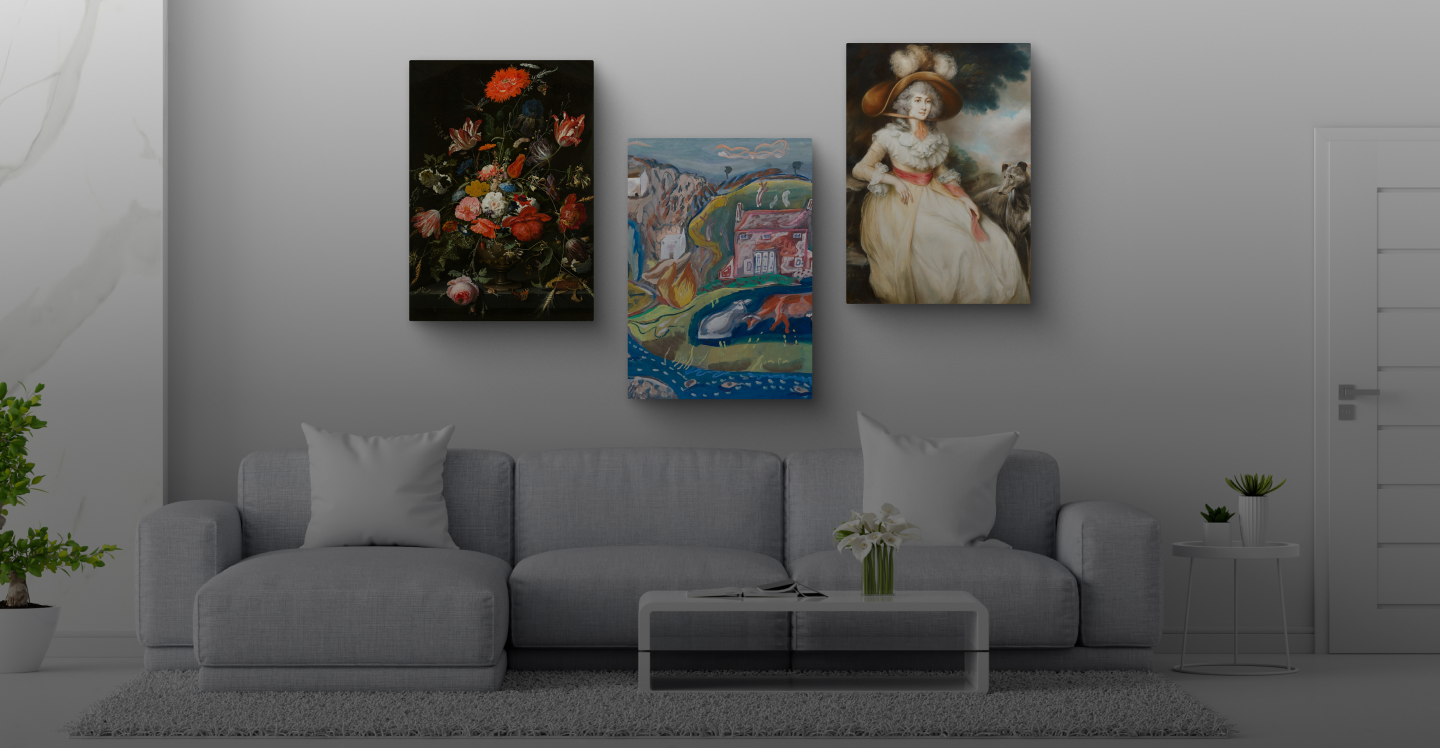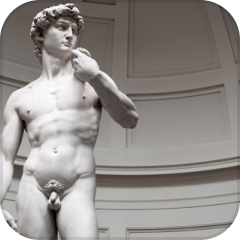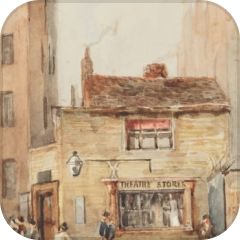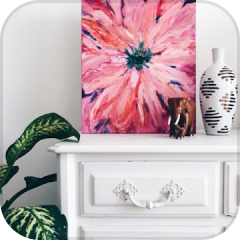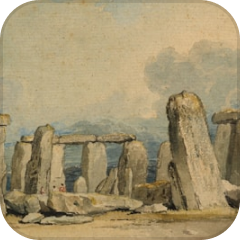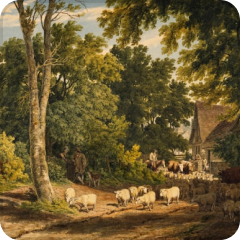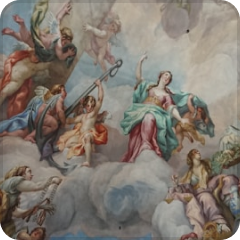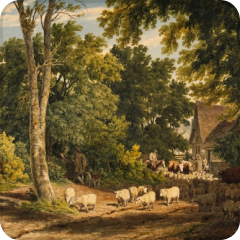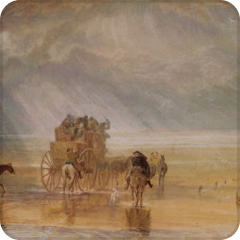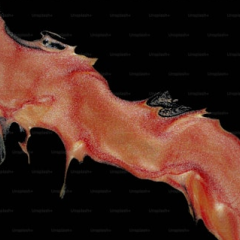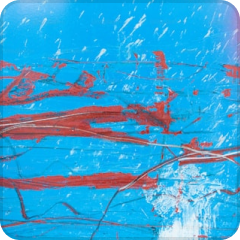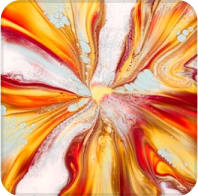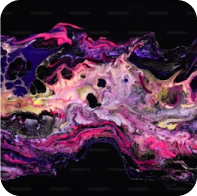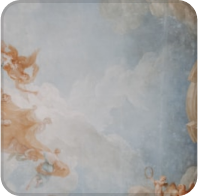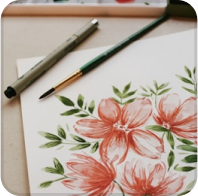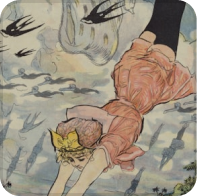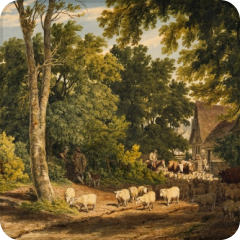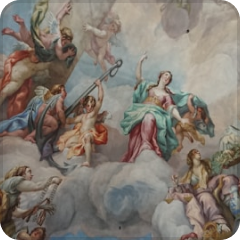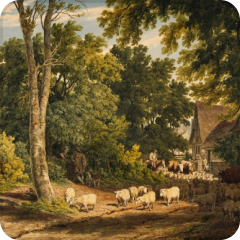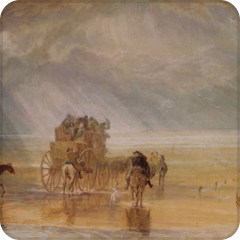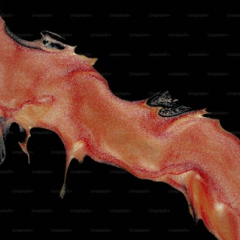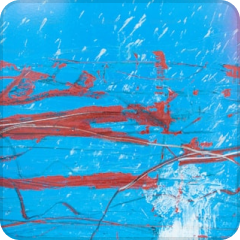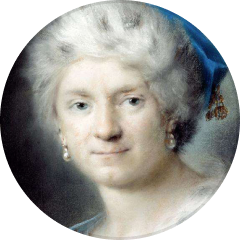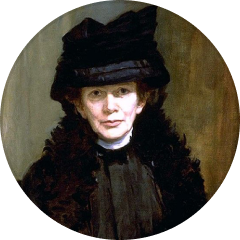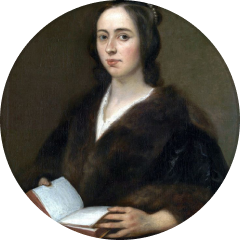





Top Categories
Transform Your Space with Personalized Art Prints
Bring your walls to life with premium, customizable canvas prints. Whether it’s your favorite memories or inspiring art, Zebaco makes it easy to create beautiful, durable pieces that reflect your style.

High-Quality Prints

Affordable Custom Art

100% Satisfaction
What’s On Sale
What Our Customers are Saying


Oliver Stone
"I recently purchased a stunning canvas from Zebaco, and I couldn't be happier with my choice! The vibrant colors and exquisite detail have truly transformed my living room. “


Amelia Rivers
"I recently purchased a stunning canvas from Zebaco, and I couldn't be happier with my choice! The vibrant colors and exquisite detail have truly transformed my living room. “


Ethan Hawke
"I recently purchased a stunning canvas from Zebaco, and I couldn't be happier with my choice! The vibrant colors and exquisite detail have truly transformed my living room. “


Sophia Bennett
"I recently purchased a stunning canvas from Zebaco, and I couldn't be happier with my choice! The vibrant colors and exquisite detail have truly transformed my living room. “


Sophia Bennett
"I recently purchased a stunning canvas from Zebaco, and I couldn't be happier with my choice! The vibrant colors and exquisite detail have truly transformed my living room. “
The Complete Guide to Canvas Wall Art & Photo Prints: Transforming Spaces with Affordable Visual Storytelling
In an era dominated by digital screens and virtual experiences, canvas wall art has emerged as a powerful counterbalance, bringing tangible beauty and personal expression into our living spaces. The resurgence of canvas prints represents more than just a decorative trend; it embodies our fundamental human need for authentic visual connection and storytelling within our most intimate environments.
Canvas wall art serves as a bridge between traditional artistic expression and contemporary accessibility. Unlike original paintings that may require significant investment, canvas prints democratize art ownership, allowing individuals from all economic backgrounds to curate meaningful visual experiences in their homes, offices, and commercial spaces.
The medium itself carries inherent advantages that distinguish it from other wall decoration options. Canvas provides texture and depth that flat posters cannot match, while offering durability that surpasses paper-based alternatives. The woven fabric surface creates subtle shadows and highlights that change throughout the day as natural light shifts, making each viewing experience unique and dynamic.
Understanding Canvas Materials and Construction Methods
The foundation of exceptional canvas wall art lies in understanding the materials and construction processes that determine both aesthetic appeal and longevity. Traditional canvas derives from cotton, linen, or synthetic fibers, each offering distinct characteristics that influence the final product's appearance and durability.
Cotton canvas represents the most popular choice for contemporary prints, providing an excellent balance between cost-effectiveness and quality. The natural cotton fibers create a slightly textured surface that enhances ink absorption while maintaining color vibrancy over time. High-grade cotton canvas typically weighs between 300-400 grams per square meter, ensuring sufficient body to prevent sagging while remaining flexible enough for easy handling and mounting.
Linen canvas, historically favored by master painters, offers superior longevity and a more pronounced texture that adds sophisticated depth to printed images. The flax fibers used in linen production create irregular patterns that can enhance certain artistic styles, particularly abstract compositions and landscape photography. However, linen's higher cost makes it a premium option typically reserved for archival pieces or luxury installations.
Synthetic canvas materials, primarily polyester-based, provide exceptional durability and moisture resistance. These modern alternatives excel in environments where humidity fluctuations pose risks to natural fiber canvases. Commercial spaces, bathrooms, and coastal locations often benefit from synthetic canvas options that maintain their appearance despite challenging environmental conditions.
The stretching and mounting process significantly impacts the final product's professional appearance. Gallery-wrapped canvases, where the image extends around the frame's edges, create a contemporary, finished look that eliminates the need for additional framing. This approach works particularly well with photography and modern graphic designs where edge continuity enhances visual impact.
Museum-wrapped canvases maintain image boundaries within the front surface, with neutral-colored canvas covering the sides. This traditional approach suits classical artwork reproductions and pieces intended for eventual framing. The choice between gallery and museum wrapping should align with the intended display context and personal aesthetic preferences.
The Printing Revolution: From Traditional to Digital Canvas Creation
The evolution from hand-painted canvases to digitally printed alternatives has revolutionized accessibility without sacrificing quality. Modern printing techniques can reproduce artwork with remarkable fidelity, capturing subtle color gradations and fine details that rival traditional painting methods.
Giclee printing represents the gold standard for canvas reproduction, utilizing archival pigment inks that resist fading for decades when properly displayed. The term "giclee," derived from the French word meaning "to spray," describes the precise ink application process that creates smooth color transitions and exceptional detail resolution.
Inkjet printing on canvas has evolved significantly, with current systems capable of producing gallery-quality results at accessible price points. The key lies in understanding resolution requirements, color profiles, and ink quality. Professional-grade printers achieve resolution levels exceeding 1440 dots per inch, ensuring crisp details even in large-format prints.
UV-resistant inks have transformed canvas print longevity, with properly produced pieces maintaining color integrity for 50-100 years under normal indoor conditions. This advancement positions canvas prints as legitimate long-term investments rather than temporary decorative solutions.
Water-based versus solvent-based inks present different advantages depending on intended use. Water-based formulations offer environmental benefits and reduced odor, making them suitable for residential applications. Solvent-based alternatives provide enhanced durability for outdoor installations or high-traffic commercial environments.
Size Selection and Spatial Considerations for Maximum Impact
Choosing appropriate canvas dimensions requires careful consideration of room proportions, viewing distances, and surrounding elements. Undersized artwork often appears lost on large walls, while oversized pieces can overwhelm intimate spaces and create visual imbalance.
The golden ratio principle provides valuable guidance for canvas sizing decisions. This mathematical relationship, approximately 1:1.618, creates naturally pleasing proportions that harmonize with human visual perception. Applying this ratio to both individual piece dimensions and grouping arrangements often yields aesthetically satisfying results.
Single large-format canvases make bold statements and serve as room focal points. Dimensions exceeding 36x48 inches command attention and work exceptionally well above furniture pieces like sofas, beds, or dining tables. These substantial pieces require adequate wall space and sufficient viewing distance to appreciate properly.
Multi-panel compositions, known as diptychs, triptychs, or polyptychs, offer creative flexibility for challenging wall configurations. Sequential panels can tell visual stories, create rhythm through repetition, or extend panoramic scenes across expansive walls. Spacing between panels typically ranges from 2-6 inches, depending on overall composition size and viewing distance.
Gallery walls combine multiple smaller canvases to create dynamic, personalized displays. This approach works particularly well for showcasing diverse artistic styles, family photography, or thematic collections. Successful gallery walls maintain visual coherence through consistent framing styles, color palettes, or subject matter while allowing individual pieces to retain distinct character.
Vertical orientation canvases enhance ceiling height perception and work well in narrow spaces like hallways or between windows. Horizontal formats emphasize width and create calming, expansive feelings that suit bedrooms and relaxation areas. Square formats offer balanced, stable compositions that adapt well to various room configurations.
Color Psychology and Emotional Resonance in Canvas Selection
The psychological impact of color choices in canvas wall art extends far beyond mere aesthetic preferences, influencing mood, energy levels, and overall spatial perception. Understanding color psychology enables more intentional selections that support desired emotional atmospheres within different spaces.
Warm colors including reds, oranges, and yellows stimulate energy and conversation, making them excellent choices for social areas like living rooms and dining spaces. These hues advance visually, making rooms feel more intimate and cozy while encouraging social interaction and activity.
Cool colors such as blues, greens, and purples promote tranquility and concentration, ideal for bedrooms, home offices, and meditation spaces. These colors recede visually, creating impressions of increased space while fostering calm, contemplative moods.
Neutral palettes featuring grays, beiges, and earth tones provide versatile foundations that complement various decorating styles while allowing other room elements to take prominence. Neutral canvases work particularly well in minimalist designs or spaces where artwork serves as subtle background rather than dominant focal points.
Monochromatic schemes utilizing variations of single colors create sophisticated, cohesive looks that demonstrate refined artistic sensibility. Black and white photography printed on canvas exemplifies this approach, offering timeless elegance that transcends fleeting design trends.
Complementary color combinations, positioned opposite each other on the color wheel, generate visual excitement and energy. Red and green, blue and orange, or purple and yellow pairings create dynamic tension that captures attention and stimulates visual interest.
Analogous color schemes use adjacent color wheel segments to create harmonious, flowing compositions. These gentle transitions feel naturally pleasing and work well in spaces where visual calm takes priority over dramatic impact.
The interaction between canvas colors and existing room elements requires careful consideration. Artwork should complement wall colors, furniture tones, and textile patterns without creating overwhelming visual competition. Sometimes contrasting elements create intentional drama, while other situations call for harmonious integration.
Lighting conditions dramatically affect color perception, making it essential to evaluate canvas options under various illumination scenarios. Natural daylight reveals true colors, while artificial lighting can shift perceptions significantly. Warm LED bulbs enhance red and yellow tones, while cool lighting emphasizes blues and greens.
Subject Matter Selection: Finding Personal and Universal Appeal
The subject matter chosen for canvas wall art communicates volumes about personal taste, values, and aspirations while contributing to the overall spatial narrative. Successful selections balance individual preferences with broader aesthetic considerations that enhance rather than clash with existing design elements.
Landscape photography and nature scenes remain perennially popular due to their universal appeal and ability to bring outdoor tranquility indoors. Mountain vistas, ocean scenes, forest canopies, and desert landscapes offer escapism while creating visual depth that expands perceived room dimensions. These subjects work particularly well in urban environments where natural views may be limited.
Abstract art provides creative freedom and interpretive flexibility that allows viewers to project personal meanings onto compositions. Geometric abstractions offer structured sophistication, while organic abstractions evoke natural forms and emotional responses. Abstract pieces adapt well to various decorating styles and can serve as conversation starters that reveal different meanings to different viewers.
Portrait and figurative art brings human elements into spaces, creating emotional connections and narrative possibilities. Family photography printed on canvas transforms personal memories into prominent display pieces, while artistic portraits add character and sophistication to formal spaces.
Still life compositions featuring everyday objects elevated through artistic interpretation offer subtle beauty that doesn't compete for attention. Botanical studies, vintage objects, and architectural details provide sophisticated decoration that enhances rather than dominates spatial aesthetics.
Cultural and travel photography allows personal experiences and global appreciation to become permanent room features. Images from significant journeys, cultural celebrations, or architectural landmarks serve as conversation pieces while reflecting individual interests and experiences.
Typographic art combines visual design with meaningful text, creating pieces that inspire, motivate, or commemorate important concepts. Inspirational quotes, song lyrics, or personal mantras rendered in attractive fonts become daily reminders of important values and aspirations.
Seasonal subjects offer opportunities for periodic refresh without permanent commitment. Autumn leaves, winter landscapes, spring blossoms, and summer beaches can rotate throughout the year, maintaining visual interest while reflecting natural cycles.
Quality Assessment: Distinguishing Professional from Amateur Production
Recognizing quality indicators in canvas wall art ensures investment in pieces that maintain appearance and value over time. Several key factors distinguish professional production from inferior alternatives that may disappoint through premature degradation or poor visual presentation.
Print resolution represents the foundation of visual quality, with professional canvas prints requiring minimum 300 DPI (dots per inch) resolution for crisp detail reproduction. Lower resolutions result in pixelation, blurred edges, and overall poor image quality that becomes increasingly apparent at normal viewing distances.
Color accuracy depends on proper calibration throughout the production process, from digital file preparation through final printing. Professional producers use color-managed workflows that ensure printed results match digital previews, eliminating unwanted color shifts that can dramatically alter artistic intent.
Canvas texture should complement rather than interfere with printed images. Fine art reproductions benefit from smooth canvas surfaces that don't compete with brushstroke details, while photography often works well with subtle textures that add visual interest without overwhelming image content.
Ink penetration into canvas fibers indicates proper printing technique and equipment quality. Surface-only ink application creates vulnerability to scratching and premature fading, while proper penetration ensures longevity and resistance to minor surface contact.
Edge finishing reveals production attention to detail and professional standards. Clean, tight wrapping around frame edges with properly mitered corners indicates careful craftsmanship, while loose or uneven edges suggest rushed or amateur production methods.
Frame construction affects both appearance and longevity, with solid wood frames providing superior stability compared to composite alternatives. Proper corner joinery, adequate cross-bracing, and appropriate frame depth ensure canvases maintain shape and tension over time.
Protective coatings, when applied correctly, enhance longevity without altering image appearance. UV-resistant treatments help prevent color fading, while anti-fade coatings provide additional protection against environmental factors.
Affordable Canvas Art: Maximizing Value Without Compromising Quality
The democratization of canvas art production has created unprecedented opportunities for acquiring high-quality pieces at accessible price points. Understanding value factors enables informed decisions that maximize aesthetic and financial benefits while avoiding common pitfalls that lead to disappointing purchases.
Print-on-demand services have revolutionized canvas art accessibility by eliminating inventory costs and enabling competitive pricing. These platforms maintain extensive catalogs of artwork available for immediate production, often at significantly lower costs than traditional retail channels.
Bulk purchasing opportunities arise when decorating multiple rooms or creating comprehensive gallery walls. Many producers offer volume discounts that make extensive collections financially feasible while ensuring visual consistency across multiple pieces.
Seasonal promotions and clearance events provide opportunities for significant savings on quality canvas art. End-of-year sales, holiday promotions, and new collection launches often feature substantial discounts on previous inventory.
DIY canvas printing represents the ultimate budget-friendly option for those with access to appropriate equipment and materials. High-quality inkjet printers, archival inks, and pre-stretched canvases enable home production of professional-quality pieces at material costs.
Alternative size considerations can yield substantial savings while maintaining visual impact. Slightly smaller dimensions often cost significantly less while providing nearly identical aesthetic benefits, particularly when grouped in multi-piece arrangements.
Local artist collaborations offer unique pieces at reasonable prices while supporting community creativity. Commissioning original work or purchasing existing pieces directly from artists eliminates retail markups while ensuring complete originality.
Digital art marketplaces connect buyers with independent artists worldwide, offering unique designs at competitive prices. These platforms often feature emerging artists whose work provides distinctive style at accessible costs.
Hanging and Display Strategies for Professional Presentation
Proper canvas hanging transforms good artwork into exceptional room features through careful attention to placement, lighting, and surrounding element coordination. Professional presentation principles ensure maximum visual impact while protecting investment value through appropriate handling and positioning.
Eye-level positioning remains the fundamental principle for individual canvas placement, with center points typically positioned 57-60 inches from floor level. This standard accommodates average human height while ensuring comfortable viewing for most individuals.
Furniture relationship considerations affect both aesthetic appeal and practical functionality. Canvases hung above sofas, beds, or tables should maintain 6-12 inch clearance to prevent accidental contact while creating visual connection between artwork and furniture pieces.
Lighting design significantly influences canvas appearance and requires careful planning for optimal results. Natural light provides ideal color rendering but requires protection from direct sunlight that can cause fading. Artificial lighting should illuminate artwork evenly without creating glare or hotspots that interfere with viewing.
Picture ledges offer flexible display options that accommodate changing collections without wall damage. These mounting systems enable easy rearrangement while providing stable support for various canvas sizes.
Wire hanging systems distribute weight evenly across multiple wall points, reducing stress on individual mounting hardware. This approach proves particularly valuable for larger canvases or groupings that exceed standard picture hanging weight limits.
Wall anchoring methods must match wall construction and canvas weight requirements. Hollow walls require toggle bolts or wall anchors, while solid walls accommodate screw-in hardware directly into studs or masonry.
Grouping arrangements benefit from paper templates that allow positioning experimentation before creating wall holes. Cut paper patterns matching canvas dimensions enable layout testing and adjustment without commitment to permanent mounting decisions.
Room-by-Room Canvas Selection and Styling Approaches
Different rooms serve distinct functions and atmospheres, requiring thoughtful canvas selection that enhances rather than conflicts with intended uses. Understanding room-specific considerations enables more effective choices that contribute to overall design cohesion and functional success.
Living room canvases often serve as primary focal points that establish room character and conversation topics. Large-scale pieces work well above main seating areas, while secondary walls accommodate smaller groupings or series installations. Color coordination with existing furniture and textiles creates harmonious environments that feel intentionally designed.
Bedroom artwork should promote relaxation and personal comfort through calming subjects and soothing color palettes. Landscape scenes, abstract compositions in cool tones, or meaningful personal photography create restful atmospheres conducive to sleep and rejuvenation.
Kitchen and dining area canvases can incorporate food-related themes, botanical subjects, or cultural elements that enhance dining experiences. Moisture-resistant treatments become important in these environments where steam and cooking activities may affect untreated canvases.
Home office spaces benefit from motivational subjects, architectural photography, or abstract compositions that inspire creativity without causing distraction. Professional environments require more conservative choices that project appropriate business images.
Bathroom canvas selection requires moisture-resistant materials and subjects that complement rather than clash with the room's functional nature. Spa-like themes, water scenes, or botanical subjects often work well in these intimate spaces.
Hallway and stairwell canvases create opportunities for storytelling through sequential arrangements or unified themes that guide movement through transitional spaces. These areas accommodate smaller individual pieces or extended gallery wall compositions.
Children's rooms allow for playful, colorful subjects that reflect young personalities while remaining sophisticated enough to grow with changing tastes. Educational themes, nature subjects, or beloved characters can create inspiring environments that support learning and imagination.
Canvas Care and Preservation for Lasting Beauty
Maintaining canvas wall art ensures continued enjoyment and value preservation through simple but important care practices. Understanding proper handling, cleaning, and environmental protection extends canvas lifespan significantly while maintaining original appearance quality.
Dust accumulation represents the primary ongoing maintenance concern for canvas art. Regular gentle cleaning using soft-bristled brushes or microfiber cloths removes surface particles that can embed in canvas texture over time. Vacuum cleaners with brush attachments provide effective cleaning for larger pieces, using low suction settings to prevent canvas damage.
Humidity control protects canvas materials from expansion and contraction cycles that can cause cracking, warping, or loosening over time. Ideal relative humidity levels range between 45-55%, with consistent levels more important than achieving perfect percentages.
Direct sunlight exposure poses the greatest threat to canvas longevity, causing irreversible color fading and material degradation. UV-filtering window films, strategic placement away from direct sun paths, or protective glass coverings help preserve color integrity.
Temperature fluctuations should be minimized to prevent material stress and potential mounting hardware failure. Extreme heat can cause canvas expansion, while cold conditions may make materials brittle and prone to cracking.
Professional cleaning services become necessary for valuable pieces or when damage occurs beyond simple dust accumulation. Restoration specialists possess appropriate materials and techniques for addressing tears, stains, or color degradation without causing additional damage.
Storage considerations apply when rotating collections or temporarily removing pieces. Proper storage requires clean, climate-controlled environments with adequate support to prevent creasing or warping. Acid-free materials should separate stacked pieces to prevent chemical reactions.
Creating Cohesive Collections and Thematic Arrangements
Developing canvas collections that work harmoniously together requires strategic planning and understanding of visual relationship principles. Successful collections demonstrate intentional curation rather than random accumulation, creating sophisticated displays that reflect personal taste and design sensibility.
Color story development provides the foundation for cohesive collections, whether through monochromatic schemes, complementary contrasts, or analogous harmonies. Consistent color relationships create visual flow that unifies diverse subjects and styles within single displays.
Scale variation within collections adds visual interest while maintaining overall unity. Combining large anchor pieces with medium and small supporting works creates dynamic arrangements that guide eye movement and establish hierarchy within groupings.
Style consistency versus eclectic mixing represents a fundamental design decision that affects collection character. Matching artistic styles create refined, sophisticated appearances, while carefully curated eclectic combinations can demonstrate broad artistic appreciation and personal creativity.
Framing coordination extends visual unity across diverse pieces, with consistent frame styles, colors, or materials creating cohesive appearances even when artwork varies significantly. Alternatively, varied framing can add visual interest when artwork itself maintains strong consistency.
Thematic connections provide intellectual and emotional unity that transcends visual similarities. Travel collections, nature series, or cultural explorations create narrative threads that invite viewer engagement and reflection.
Seasonal rotation capabilities should be considered when planning extensive collections. Modular arrangements and standardized hanging hardware enable easy updates that keep displays fresh and relevant throughout the year.
Commercial and Professional Canvas Applications
Canvas wall art serves important functions beyond residential decoration, providing professional environments with sophisticated visual elements that enhance brand identity, client impressions, and employee satisfaction. Understanding commercial applications opens opportunities for larger projects and specialized considerations.
Corporate environments utilize canvas art to communicate company values, showcase achievements, or create welcoming atmospheres for clients and employees. Professional photography, abstract compositions, or custom graphics reinforce brand identity while avoiding controversial subjects that might alienate diverse audiences.
Hospitality spaces including hotels, restaurants, and entertainment venues leverage canvas art to establish ambiance and differentiate experiences. Large-scale installations, local cultural themes, or custom artwork create memorable environments that contribute to overall customer satisfaction.
Healthcare facilities benefit from canvas art that promotes healing, reduces stress, and creates positive distractions for patients and families. Nature scenes, calming abstracts, and uplifting subjects contribute to therapeutic environments while avoiding imagery that might cause distress.
Educational institutions use canvas displays to inspire learning, showcase student work, or communicate institutional values. Historical subjects, scientific imagery, or cultural celebrations can enhance educational environments while creating pride and community connection.
Retail environments employ canvas art to establish brand personality, guide customer flow, or create Instagram-worthy backgrounds that encourage social sharing. Strategic placement near key merchandise or checkout areas can influence purchasing decisions and customer experience.
Professional offices and consulting spaces use canvas art to establish credibility, create comfortable client environments, or reflect industry expertise. Sophisticated abstracts, architectural photography, or relevant industry imagery can enhance professional image while maintaining appropriate atmosphere.
The Environmental Impact of Canvas Production and Sustainable Alternatives
Growing environmental consciousness has brought attention to canvas art production methods and their ecological implications. Understanding environmental factors enables more responsible purchasing decisions while supporting sustainable practices within the industry.
Traditional cotton canvas production requires significant water usage and pesticide application, contributing to environmental stress in agricultural regions. Organic cotton alternatives reduce chemical usage but often command premium pricing that affects accessibility.
Synthetic canvas materials, while offering durability advantages, rely on petroleum-based production processes that contribute to fossil fuel consumption. However, their extended lifespans may offset initial environmental costs through reduced replacement needs.
Ink formulations vary significantly in environmental impact, with water-based alternatives generally offering superior ecological profiles compared to solvent-based options. Vegetable-based inks provide even greater environmental benefits while maintaining print quality standards.
Local production reduces transportation-related carbon emissions while supporting regional economies. Choosing nearby producers when possible minimizes environmental impact while often providing opportunities for direct communication about quality requirements.
Recycled and reclaimed materials offer sustainable alternatives for environmentally conscious consumers. Reclaimed wood frames, recycled canvas materials, and eco-friendly packaging demonstrate industry commitment to environmental responsibility.
End-of-life considerations become increasingly important as canvas collections evolve. Recyclable components, biodegradable materials, and repurposing opportunities help minimize waste when pieces reach the end of their display lives.
Cultural Significance and Artistic Heritage in Canvas Art
Canvas as an artistic medium carries rich cultural history that connects contemporary users with centuries of artistic tradition. Understanding this heritage adds depth and meaning to modern canvas selections while honoring the craft traditions that enable current accessibility.
Historical canvas painting techniques developed over centuries continue to influence modern reproduction methods. Understanding brush techniques, color layering, and composition principles helps viewers appreciate both original artwork and high-quality reproductions.
Regional artistic traditions offer opportunities to celebrate cultural heritage through canvas selections. Folk art patterns, traditional motifs, or historical subject matter can honor ancestry while creating meaningful personal connections.
Contemporary artist support through canvas purchases helps sustain creative communities while providing access to original artistic vision. Many artists offer limited edition canvas prints that provide affordability while maintaining exclusivity and artistic integrity.
Cross-cultural artistic exchange facilitated by global canvas availability exposes viewers to diverse artistic traditions and perspectives. African textiles, Asian calligraphy, European architecture, or American landscapes can broaden cultural understanding while creating beautiful displays.
Artistic movement representations allow exploration of different periods and styles through accessible canvas reproductions. Impressionist landscapes, Art Deco graphics, or contemporary minimalism can educate while decorating.
The Psychology of Space Transformation Through Visual Elements
Canvas wall art possesses remarkable power to transform spatial perception and emotional atmosphere through strategic visual intervention. Understanding these psychological principles enables more intentional selections that achieve desired environmental goals beyond mere decoration.
Spatial expansion illusions can be created through landscape canvases that extend visual boundaries beyond physical walls. Horizon lines, perspective elements, and distant focal points trick the eye into perceiving greater depth and space than actually exists.
Ceiling height enhancement occurs when vertical canvas orientations draw attention upward, creating impressions of increased room height. This effect proves particularly valuable in spaces with low ceilings or cramped proportions.
Natural light simulation through canvas imagery featuring bright, outdoor scenes can compensate for limited window access or unfavorable room orientations. Beach scenes, sunny landscapes, or sky studies bring psychological benefits of natural light exposure.
Energy level modulation results from careful color and subject selection that either stimulates or calms depending on space requirements. Active colors and dynamic compositions energize work spaces, while peaceful subjects and cool tones promote relaxation.
Focus enhancement in work environments can be achieved through abstract compositions or minimal subjects that provide visual interest without causing distraction. These pieces offer mental breaks during concentrated work while maintaining productivity-supportive atmospheres.
Memory anchoring occurs when canvas subjects hold personal significance, creating emotional connections that enhance spatial comfort and attachment. Travel photography, family images, or meaningful symbols transform spaces into personal sanctuaries.
Seasonal and Occasional Canvas Display Strategies
Dynamic canvas displays that change with seasons or special occasions maintain visual freshness while maximizing collection utility. Strategic rotation systems enable extensive art enjoyment without overwhelming storage requirements or permanent mounting commitments.
Seasonal color palettes can reflect natural cycles through canvas selections that echo outdoor changes. Autumn warm tones, winter cool palettes, spring fresh greens, and summer bright colors create connections with natural rhythms while refreshing interior atmospheres.
Holiday-specific canvases allow celebration without permanent commitment to themed decoration. Subtle seasonal elements rather than obvious holiday symbols enable longer display periods while maintaining festive spirits.
Modular hanging systems facilitate easy canvas rotation without wall damage or complex reinstallation processes. Track systems, picture ledges, or standardized hanging hardware enable quick changes that keep displays current and interesting.
Storage solutions for rotated canvases require clean, dry environments that protect unused pieces from damage. Proper wrapping, adequate support, and organized cataloging ensure collection preservation and easy access.
Anniversary and milestone commemorations can be highlighted through temporary canvas displays that celebrate important dates or achievements. Wedding photography, graduation images, or achievement documentation can receive prominent temporary display.
Custom Canvas Creation: From Personal Photos to Original Designs
Personal photography transformation into canvas art creates unique, meaningful displays that no commercial artwork can match. Understanding preparation requirements and design principles ensures successful translation from digital files to physical canvas presentations.
Image resolution requirements for canvas printing exceed typical digital sharing standards, with minimum 300 DPI resolution necessary for quality results. Original high-resolution files produce superior results compared to social media versions or compressed email attachments.
Composition adjustments may be necessary when transitioning from standard photo proportions to canvas dimensions. Cropping decisions should consider focal points, background elements, and overall visual balance to ensure effective translation.
Color correction and enhancement can improve canvas results beyond original photography quality. Professional editing software enables exposure adjustment, color balancing, and detail enhancement that optimizes images for canvas reproduction.
Multiple image combinations create unique panoramic or collage effects impossible with single photographs. Careful blending, consistent lighting, and compatible perspectives enable seamless compositions that tell complex visual stories.
Text integration allows personalization through meaningful quotes, dates, or names incorporated into photographic compositions. Font selection, placement, and sizing require careful consideration to enhance rather than detract from image content.
Original digital art creation opens unlimited creative possibilities for truly unique canvas pieces. Digital painting, graphic design, or photo manipulation can produce artwork specifically designed for canvas reproduction and personal space requirements.
Design software accessibility has democratized artistic creation, with user-friendly applications enabling complex compositions without professional training. Templates, filters, and automated tools help amateur creators achieve professional-quality results.
The Economics of Canvas Art Investment and Collection Building
Understanding canvas art economics enables strategic collection building that maximizes both aesthetic satisfaction and potential value appreciation. While most canvas purchases serve primarily decorative purposes, awareness of value factors contributes to more informed decision-making.
Limited edition prints often command higher prices but may offer greater long-term value retention compared to unlimited reproductions. Edition sizes, artist signatures, and authenticity certificates contribute to potential appreciation.
Artist reputation significantly affects canvas value trajectories, with established artists commanding premium prices while emerging talents offer opportunities for early acquisition at lower costs. Following artistic careers and market trends can inform strategic purchasing decisions.
Condition preservation directly impacts long-term value, making proper care and display practices essential for collection maintenance. Well-preserved pieces retain aesthetic and financial value while damaged works depreciate rapidly.
Market demand fluctuations affect different subjects and styles unpredictably, making broad diversification preferable to concentrated collecting in single areas. Popular subjects today may lose appeal, while currently undervalued styles might gain future recognition.
Authentication and provenance documentation become important for valuable pieces, requiring careful record-keeping and storage of purchase information, artist communications, or gallery documentation.
Insurance considerations apply to valuable collections, with specialized fine art policies offering protection beyond standard homeowner coverage. Professional appraisals establish documented values for insurance and estate planning purposes.
Therapeutic and Wellness Benefits of Curated Visual Environments
Canvas wall art contributes to psychological wellness through carefully curated visual environments that support mental health, stress reduction, and overall life satisfaction. Understanding these benefits enables more intentional selections that serve therapeutic as well as aesthetic purposes.
Stress reduction occurs through exposure to calming imagery that activates relaxation responses. Nature scenes, abstract compositions in cool colors, or peaceful landscapes can lower cortisol levels and promote emotional balance.
Mood enhancement results from strategically chosen subjects and colors that encourage positive emotional states. Uplifting imagery, inspiring quotes, or personally meaningful photographs can combat depression and maintain optimistic outlooks.
Creativity stimulation through abstract art, bold colors, or unusual compositions can inspire innovation and problem-solving abilities. Artistic environments encourage creative thinking while providing visual inspiration for personal projects.
Memory preservation through personal photography displayed prominently maintains connections with important relationships, experiences, and achievements. These visual reminders strengthen identity and provide comfort during challenging periods.
Goal visualization using imagery representing aspirations, dreams, or desired outcomes can reinforce motivation and commitment to personal development. Travel destinations, lifestyle images, or achievement representations serve as daily inspiration.
Meditation support through carefully selected subjects can enhance mindfulness practices and spiritual development. Mandala patterns, natural scenes, or symbolic imagery provide focal points for contemplative practices.
Future Trends and Innovations in Canvas Wall Art
The canvas art industry continues evolving through technological advancements, changing consumer preferences, and innovative production methods. Understanding emerging trends helps anticipate future opportunities while making current decisions that remain relevant over time.
Augmented reality integration promises to revolutionize canvas art interaction, with mobile applications providing additional information, animations, or alternative views when scanning printed pieces. This convergence of physical and digital elements creates new possibilities for artistic expression and viewer engagement.
Smart canvas displays incorporating thin LED panels or e-ink surfaces enable dynamic content changes while maintaining traditional canvas aesthetics. These hybrid solutions could allow single frames to display multiple artworks or respond to environmental conditions.
Sustainable material development focuses on reducing environmental impact through renewable resources, biodegradable components, and circular economy principles. Bio-based inks, recycled canvas materials, and compostable frames represent growing industry commitments to environmental responsibility.
Artificial intelligence-assisted design tools democratize artistic creation by helping users generate original compositions tailored to specific spaces, color schemes, or style preferences. These technologies enable personalized art creation without traditional artistic training.
Three-dimensional canvas effects through specialized printing techniques create texture and depth that blur boundaries between prints and original paintings. Raised ink applications, textured surfaces, and layered compositions offer enhanced visual and tactile experiences.
On-demand production efficiency continues improving through automated systems that reduce costs while maintaining quality standards. Faster turnaround times and lower minimum orders make canvas art increasingly accessible to broader audiences.
Virtual reality preview capabilities allow customers to visualize canvas pieces within their actual spaces before purchase, reducing uncertainty and return rates while improving satisfaction with final selections.
Global Canvas Art Traditions and Contemporary Interpretations
Canvas art traditions from around the world offer rich inspiration for contemporary selections while honoring cultural heritage and artistic diversity. Understanding these traditions expands appreciation for different aesthetic approaches and symbolic meanings.
European classical traditions emphasizing realistic representation, perspective mastery, and symbolic content continue influencing contemporary canvas reproductions. Renaissance masterpieces, Baroque drama, and Impressionist innovations remain popular subjects for high-quality reproductions.
Asian artistic principles including minimalism, asymmetrical balance, and natural harmony offer alternative aesthetic approaches that complement modern design sensibilities. Japanese woodblock prints, Chinese landscape paintings, and Indian miniature art provide distinctive visual languages.
African textile traditions translate beautifully to canvas formats, with bold patterns, symbolic colors, and cultural narratives creating powerful visual statements. Contemporary interpretations of traditional designs honor heritage while adapting to modern contexts.
Indigenous art forms from various continents offer unique perspectives and spiritual connections that enrich personal environments. Respectful appreciation requires understanding cultural significance and supporting authentic artist communities.
Contemporary fusion styles combine traditional elements with modern sensibilities, creating fresh interpretations that honor heritage while speaking to current audiences. These hybrid approaches often yield the most personally meaningful and culturally relevant selections.
Latin American artistic traditions including vibrant colors, folk motifs, and narrative content provide energetic alternatives to European-dominated art markets. Mexican muralism, Brazilian street art, and Andean textiles offer dynamic visual options.
Canvas Grouping and Gallery Wall Design Principles
Creating effective gallery walls requires understanding visual relationship principles that transform individual canvases into cohesive, dynamic displays. Successful groupings demonstrate intentional design while allowing individual pieces to contribute to larger compositional goals.
Symmetrical arrangements provide formal, balanced appearances that suit traditional decorating styles and professional environments. Grid patterns, mirrored layouts, or centered focal points create stable, predictable compositions that convey order and sophistication.
Asymmetrical groupings offer more dynamic, contemporary feels that accommodate diverse piece sizes and create visual movement. These arrangements require careful attention to visual weight distribution and color balance to prevent compositions from appearing chaotic or unintentional.
Organic clustering mimics natural growth patterns through irregular spacing and varied orientations that create casual, collected-over-time appearances. These arrangements work well with diverse subjects and sizes while maintaining approachable, personal character.
Linear progressions work particularly well in hallways or long walls where sequential arrangement guides movement and creates narrative possibilities. Chronological sequences, size progressions, or color gradations provide organizing principles.
Salon-style hanging, inspired by historical gallery practices, maximizes wall coverage through dense arrangements that showcase extensive collections. This approach requires careful planning to prevent overwhelming effects while maintaining individual piece visibility.
Floating arrangements position groupings away from furniture or architectural elements, creating independent visual statements that can anchor room centers or define specific areas within open floor plans.
Color Theory Applications in Canvas Selection and Arrangement
Understanding color theory principles enables more sophisticated canvas selections and arrangements that create intended psychological effects while demonstrating refined aesthetic sensibility. These principles guide both individual piece choices and comprehensive collection development.
Primary color combinations using red, blue, and yellow create energetic, bold statements that stimulate attention and conversation. These fundamental relationships work particularly well in children's spaces or areas where dynamic energy serves functional purposes.
Secondary color harmonies incorporating orange, green, and purple offer more sophisticated alternatives that maintain visual interest while feeling less aggressive than primary combinations. These relationships provide excellent starting points for room color schemes.
Tertiary color subtleties including red-orange, blue-green, and yellow-green create complex, nuanced palettes that reward careful observation while providing sophisticated decoration. These advanced color relationships often yield the most personally satisfying long-term selections.
Temperature contrasts between warm and cool colors create visual excitement and depth that prevents monotonous appearances. Strategic warm/cool placement can guide attention, create focal points, or establish room zones within open spaces.
Saturation variations within color families add visual complexity without overwhelming coherence. Combining deep, rich tones with lighter variations creates depth and prevents flat, one-dimensional appearances.
Value contrasts using light and dark relationships establish visual hierarchy and dramatic impact. High contrast combinations command attention, while subtle value differences create gentle, sophisticated effects.
Canvas Art as Investment: Understanding Value and Appreciation Potential
While most canvas purchases serve primarily decorative purposes, understanding potential value appreciation helps inform purchasing decisions and collection strategies. Certain factors contribute to long-term value retention and possible appreciation over time.
Artist reputation development significantly influences canvas value trajectories, with emerging artists potentially offering the greatest appreciation opportunities. Following artistic careers, exhibition histories, and critical recognition helps identify promising talent before market discovery drives prices higher.
Limited edition significance affects value retention through scarcity creation and exclusivity appeal. Numbered prints, artist signatures, and certificate authenticity documentation contribute to potential appreciation while distinguishing pieces from unlimited reproductions.
Condition preservation remains paramount for value maintenance, requiring proper display, handling, and storage practices that prevent damage or deterioration. Well-maintained pieces retain both aesthetic and financial value while damaged works depreciate rapidly regardless of original quality.
Market trend awareness helps anticipate style and subject popularity changes that affect demand and pricing. Contemporary preferences shift periodically, making diversified collections more stable than concentrated focus on single styles or subjects.
Provenance documentation including purchase receipts, artist communications, gallery certificates, or exhibition records establishes authenticity and ownership history that supports value claims. Comprehensive record-keeping protects investment value while facilitating future sales or insurance claims.
Interior Design Integration: Canvas Art as Foundational Design Elements
Successful interior design treats canvas wall art as integral architectural elements rather than afterthought accessories, incorporating artwork into fundamental design planning that creates cohesive, sophisticated environments. This approach yields more satisfying results while maximizing artistic impact.
Color scheme foundation often begins with canvas selections that establish room palettes and influence subsequent decorating decisions. Statement pieces can provide color inspiration for furniture, textiles, and accent choices that create harmonious environments.
Architectural enhancement through strategic canvas placement can improve room proportions, highlight attractive features, or minimize less desirable elements. Horizontal pieces emphasize width, vertical arrangements enhance height, and corner installations soften harsh angles.
Style definition emerges through consistent artistic choices that establish clear design directions. Modern abstracts support contemporary aesthetics, classical reproductions enhance traditional spaces, and eclectic combinations create personalized, collected-over-time appearances.
Focal point creation uses canvas art to establish visual hierarchy and guide attention throughout spaces. Large statement pieces anchor room centers, while smaller supporting works create secondary interest points that maintain visual engagement.
Traffic flow influence occurs when canvas placement guides movement through spaces and creates natural gathering points. Strategic positioning near seating areas encourages contemplation, while hallway installations create visual interest during transitions.
Scale relationships between canvas dimensions and room proportions affect overall design success and visual comfort. Oversized pieces can overwhelm small spaces, while undersized artwork may appear insignificant in large rooms.
Canvas Photography: Transforming Personal Memories into Artistic Statements
Personal photography printed on canvas transforms cherished memories into prominent display pieces that celebrate relationships, experiences, and milestones while adding deeply personal elements to interior design. Understanding preparation and presentation principles ensures successful translation from digital files to artistic displays.
Image selection criteria should prioritize emotional significance, technical quality, and compositional strength. Meaningful moments capture attention and conversation, while technically excellent images reproduce better on canvas surfaces.
Resolution requirements for canvas printing exceed typical digital sharing standards, with original camera files providing superior results compared to compressed versions. Minimum 300 DPI resolution ensures sharp detail reproduction at intended display sizes.
Editing considerations can enhance canvas reproduction beyond original photography quality through color correction, exposure adjustment, and artistic filtering. Professional editing software enables sophisticated improvements while maintaining natural appearance.
Crop optimization adapts standard photography proportions to canvas dimensions while preserving important compositional elements. Creative cropping can improve visual impact by eliminating distracting backgrounds or emphasizing key subjects.
Multiple image combinations create unique storytelling opportunities through panoramic sequences, before-and-after comparisons, or thematic groupings that individual photographs cannot achieve alone.
Black and white conversions often enhance emotional impact while creating timeless aesthetics that transcend temporary style trends. Monochromatic treatments can unify diverse subjects within gallery wall arrangements.
Commercial Canvas Applications: Professional Environments and Brand Expression
Professional environments utilize canvas wall art to communicate brand values, enhance client experiences, and create productive work atmospheres. Understanding commercial applications opens opportunities for larger projects while addressing unique requirements of business settings.
Corporate identity expression through canvas selections reinforces company culture and values while creating welcoming environments for employees and visitors. Abstract compositions, architectural photography, or custom graphics can reflect organizational personality without controversial content.
Client impression management uses sophisticated artwork to establish credibility and professionalism while creating comfortable meeting environments. Quality canvas displays suggest attention to detail and success that influences business relationships positively.
Employee satisfaction benefits from thoughtfully selected artwork that creates pleasant work environments and demonstrates organizational investment in staff comfort. Studies indicate that attractive work environments contribute to productivity, retention, and overall job satisfaction.
Brand differentiation in competitive markets can be supported through unique artistic choices that distinguish businesses from competitors while creating memorable customer experiences. Custom artwork or distinctive style selections help establish recognizable brand identity.
Acoustic benefits occur when canvas art contributes to sound absorption and room acoustics improvement. Canvas materials naturally absorb sound waves, reducing echo and creating more comfortable audio environments.
Maintenance considerations in high-traffic commercial environments require durable materials and easy cleaning capabilities. Commercial-grade canvas treatments and protective coatings help maintain appearance despite constant exposure.
Canvas Art in Healthcare Environments: Therapeutic Visual Design
Healthcare settings benefit significantly from thoughtfully selected canvas art that promotes healing, reduces anxiety, and creates positive distractions for patients, families, and medical staff. Understanding therapeutic design principles enables artwork selection that contributes to overall wellness goals.
Stress reduction through calming imagery helps create healing environments that support patient recovery and staff wellbeing. Nature scenes, peaceful abstracts, and soft color palettes contribute to relaxation and anxiety reduction.
Wayfinding assistance can be provided through canvas art that helps navigation while avoiding institutional signage appearance. Color-coded themes, directional imagery, or landmark references help orient visitors while maintaining aesthetic appeal.
Cultural sensitivity requires artwork selections that welcome diverse populations without excluding or offending any groups. Universal themes, nature subjects, and abstract compositions typically provide safe choices for multicultural environments.
Infection control considerations mandate easy-to-clean surfaces and materials that withstand frequent sanitization without degradation. Specialized canvas treatments and protective coatings enable use in medical environments where hygiene requirements are paramount.
Age-appropriate selections vary significantly between pediatric, adult, and geriatric areas, requiring different subject matter and complexity levels. Children respond well to bright colors and playful subjects, while elderly patients may prefer familiar, nostalgic imagery.
Educational Environments: Canvas Art as Learning Enhancement Tools
Educational institutions utilize canvas wall art to inspire learning, celebrate achievement, and create positive environments that support academic success. Understanding educational applications helps identify opportunities for meaningful artistic contributions to learning spaces.
Subject reinforcement through relevant imagery can support curriculum goals while creating attractive displays. Scientific photography, historical reproductions, or literary illustrations provide educational value beyond decoration.
Cultural awareness expansion occurs when diverse artistic traditions receive prominent display, exposing students to global perspectives and artistic heritage. International artwork selections can broaden worldviews while celebrating diversity.
Achievement celebration through student artwork display on canvas creates pride and motivation while demonstrating institutional support for creativity. Professional-quality presentation elevates student work and encourages continued artistic development.
Inspiration provision through motivational imagery and quotes can encourage academic persistence and personal growth. Successful figure portraits, achievement imagery, or inspirational landscapes provide daily motivation for students and staff.
Community connection strengthens when local artist work receives prominent display, creating relationships between educational institutions and regional creative communities. These partnerships often yield ongoing benefits for both organizations.
Hospitality and Entertainment Venue Canvas Strategies
Hotels, restaurants, bars, and entertainment venues leverage canvas art to establish atmosphere, differentiate experiences, and create Instagram-worthy environments that encourage social sharing and return visits. Understanding hospitality applications guides selections that serve business goals while enhancing customer satisfaction.
Ambiance creation through carefully selected imagery establishes mood and expectation that align with business concepts. Intimate restaurants benefit from warm, inviting artwork, while energetic venues require dynamic, stimulating compositions.
Local culture celebration through regional artist work or local landmark imagery creates authentic connections with destinations while supporting community artists. Travelers appreciate authentic local flavor that distinguishes venues from generic chain establishments.
Photography encouragement results when attractive canvas backdrops create natural photo opportunities that guests eagerly share on social media. These organic marketing opportunities provide valuable exposure while enhancing customer experience.
Conversation starters emerge from interesting or unusual artwork selections that provide talking points and memorable experiences. Unique pieces help customers remember venues while creating positive associations with overall experiences.
Seasonal adaptability allows venues to refresh appearances without major renovation expenses. Rotating canvas collections can reflect holidays, special events, or changing seasons while maintaining visual interest for regular customers.
Canvas Art Restoration and Damage Prevention Strategies
Proper canvas care extends artwork lifespan significantly while maintaining original appearance quality. Understanding preservation principles and restoration options protects investment value while ensuring continued enjoyment of favorite pieces.
Preventive measures represent the most effective approach to canvas preservation, addressing potential problems before damage occurs. Environmental controls, proper handling techniques, and strategic placement prevent most common deterioration causes.
Cleaning protocols should match canvas materials and printing methods to avoid damage during maintenance. Gentle dusting, appropriate cleaning solutions, and professional services when necessary maintain appearance without risking harm.
Damage assessment helps determine whether restoration attempts are worthwhile or if replacement becomes more practical. Minor issues like small tears or surface scratches often justify professional repair, while extensive damage may exceed cost-effective restoration limits.
Professional restoration services possess specialized knowledge and equipment necessary for valuable piece repair. Art conservators understand canvas materials, ink formulations, and appropriate treatment methods that amateur attempts might compromise.
DIY repair options exist for minor damage when professional services exceed piece value or availability. Simple tears, loose corners, or minor surface issues can sometimes be addressed using appropriate materials and careful techniques.
Prevention strategies focus on identifying and eliminating common damage sources including direct sunlight, humidity fluctuations, physical contact, and environmental contaminants that cause gradual deterioration.
The Social Aspects of Canvas Art Collecting and Display
Canvas art collecting and display serve important social functions that extend beyond personal satisfaction, creating opportunities for connection, expression, and community engagement. Understanding these social dimensions enhances the collecting experience while building meaningful relationships around shared artistic interests.
Conversation facilitation occurs naturally when interesting artwork provides talking points and reveals shared interests among visitors. Well-chosen pieces create comfortable conversation starters while reflecting host personality and taste.
Cultural exchange happens when diverse artistic traditions receive display and discussion, exposing friends and family to new perspectives and aesthetic approaches. International artwork selections can spark interest in different cultures and travel destinations.
Personal expression through canvas choices communicates values, interests, and aesthetic sensibilities without verbal explanation. Art selections reveal personality aspects that might otherwise remain hidden in casual social interactions.
Community building emerges when local artist support creates connections with regional creative communities. Attending art shows, meeting artists, and displaying local work strengthens neighborhood relationships while supporting cultural development.
Gift-giving opportunities arise when meaningful canvas pieces commemorate special occasions, relationships, or shared experiences. Custom photography, favorite artist reproductions, or symbolic imagery create memorable presents that provide lasting enjoyment.
Social media sharing of attractive canvas displays extends appreciation beyond immediate circles while inspiring others to consider similar artistic investments. Beautiful installations often generate engagement and discussion among online communities.
Conclusion
Canvas wall art has established itself as an indispensable element of modern interior design, offering a unique combination of aesthetic beauty, personal expression, and accessible luxury that enriches our daily living experiences. As we have explored throughout this comprehensive examination, the appeal of canvas prints extends far beyond simple decoration to encompass psychological wellness, cultural appreciation, and meaningful personal connection.
The democratization of high-quality canvas production has transformed what was once an exclusive luxury into an accessible form of artistic expression available to individuals across all economic backgrounds. This accessibility has not come at the expense of quality; rather, technological advances have enabled professional-grade results that rival traditional artistic mediums while offering greater durability and versatility.
The versatility of canvas as a medium continues to expand as new printing techniques, materials, and design approaches emerge. From traditional landscape reproductions to cutting-edge digital art, from personal photography transformations to custom graphic designs, canvas accommodates virtually any artistic vision while maintaining the tactile quality and visual depth that distinguishes it from digital displays.
Perhaps most significantly, canvas wall art serves as a powerful tool for personal storytelling and emotional connection within our living spaces. In an increasingly digital world where experiences often lack physical presence, canvas art provides tangible beauty that engages multiple senses while creating lasting memories and daily inspiration.
The therapeutic benefits of carefully curated visual environments cannot be overstated. Canvas art contributes to stress reduction, mood enhancement, and overall wellness through exposure to meaningful imagery that supports mental health and emotional balance. These benefits extend beyond individual owners to affect all who enter thoughtfully decorated spaces.
As we look toward the future, canvas wall art will undoubtedly continue evolving through technological innovation while maintaining its fundamental appeal as a medium for personal expression and spatial transformation. The integration of sustainable materials, smart display capabilities, and augmented reality features promises to expand canvas art possibilities while preserving the essential qualities that make it beloved by millions worldwide.
The investment in quality canvas wall art represents more than financial expenditure; it constitutes an investment in daily quality of life, personal expression, and the creation of meaningful environments that reflect individual taste and values. Whether acquired as affordable prints or valuable original pieces, canvas art provides returns through enhanced living experiences, increased property appeal, and the simple joy of surrounding oneself with beauty.
Ultimately, the power of canvas wall art lies in its ability to transform ordinary spaces into extraordinary environments that inspire, comfort, and delight. As we continue to seek balance between digital convenience and authentic experience, canvas art stands as a testament to the enduring human need for tangible beauty and personal expression within our most intimate spaces.



